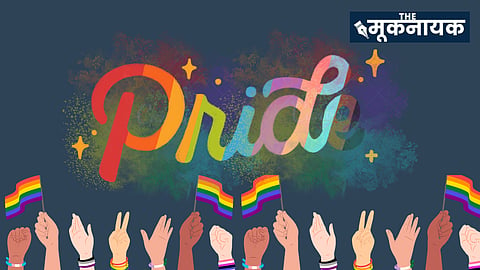
New Delhi: June holds special significance as Pride Month, celebrating Queerness and its culture — a movement rooted in the historic 1969 Stonewall Uprising in Manhattan, a pivotal moment for the Gay Liberation Movement in the United States.
Originally observed as ‘Gay Pride Day’ on the last Sunday of June, this occasion swiftly expanded into a month-long series of events across major cities nationwide. Pride Month stands as a testament to resilience and solidarity within the LGBTQ+ community, fostering reflection, unity, and advocacy for equality.
Recognized by Outright International in 101 UN member states in 2023, Pride events transcend capital cities, encompassing parades, picnics, parties, workshops, symposia, and concerts, uniting millions worldwide during LGBTQ Pride Month. Memorials honor community members lost to hate crimes or HIV/AIDS.
In 1999 and 2000, President Bill Clinton became the first U.S. leader to officially recognize Pride Month. Then, in 2016, President Barack Obama designated the site of a seminal U.S. gay rights moment—the 1969 Stonewall riots in New York City—as a national monument, marking a historic acknowledgment of gay Americans' contributions.
What was the Stonewall Riot?
In 1969, soliciting homosexual relations was illegal in New York City, as in many urban areas. Gay bars provided a sanctuary where gay men, lesbians, and others seen as sexually suspect could socialize free from public harassment. However, these establishments were frequent targets of police raids.
One such place was the Stonewall Inn in Greenwich Village, a dimly lit, crowded bar operating without a liquor license.
In the early hours of June 28, 1969, nine policemen raided the Stonewall Inn. They arrested employees for selling alcohol without a license, roughed up patrons, and enforced a New York law that required individuals to wear at least three pieces of gender-appropriate clothing.
This raid marked the third targeting Greenwich Village gay bars in a short period.
Unlike previous incidents, however, the crowd outside the bar did not disperse quietly. Their frustration boiled over as they witnessed patrons being loaded into police vans.
They began to jeer, jostle the police, and throw bottles and debris. The police, taken aback by the unexpected resistance from the gay community, called for backup and retreated into the bar, barricading themselves inside while approximately 400 people outside rioted.
The barricade was breached multiple times, and the bar was set on fire. Additional law enforcement arrived to extinguish the flames and eventually disperse the crowd.
The unrest outside the Stonewall Inn persisted for the next five days. Historians often depict this uprising as a spontaneous protest against the relentless police harassment and social discrimination faced by sexual minorities during the 1960s.
While previous protests by gay groups had occurred, the Stonewall incident marked a significant moment when lesbians, gays, and transgender individuals united in a common cause. Amidst the civil rights and feminist movements, the Stonewall riots became a catalyst, fostering solidarity and purpose within the LGBTQ+ community.
Pride Can't be Erased
In India, diverse intersections of class, caste, and gender intersect with queerness. Similarly, in the USA where the riot occurred, these dynamics are also present. Over time, those in higher social positions often overshadow and erase the contributions of Dalits, Adivasis, and others in social movements.
This trend also affects the perception of queerness and pride in the USA. Therefore, it is crucial to remember that during Stonewall, the majority of participants were drag queens or gay men of color.
Many in the LGBTQIA+ community credit transgender activist Marsha P. Johnson with sparking the riots, believing she threw the first brick or shot glass, although Johnson herself stated she arrived at the bar after the rioting had started. Nevertheless, her role in the events remains widely celebrated and acknowledged.
You can also join our WhatsApp group to get premium and selected news of The Mooknayak on WhatsApp. Click here to join the WhatsApp group.